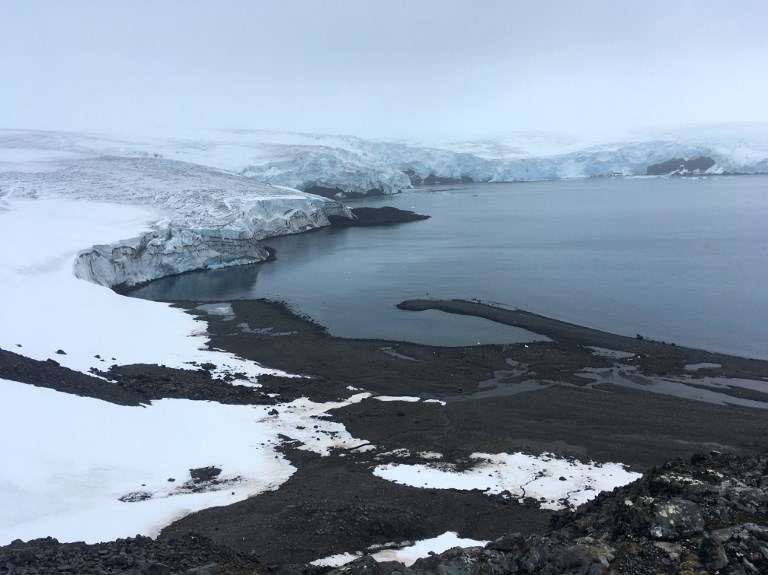
Glaciers that melt before your eyes, marine species that appear in areas where they previously didn’t exist: in Antarctica, climate change already has visible consequences for which scientists are trying to find a response and perhaps solutions for the changes that the rest of the planet can expect. / AFP PHOTO
by Patrick GALEY
Agence France Presse
PARIS, France (AFP) — Moderate global temperature rises of just two degrees Celsius could still be enough to melt parts of the largest ice sheet on Earth and raise sea levels by several metres, experts warned on Wednesday.
As the pace of climate change rapidly outstrips mankind’s attempts to rein it in, scientists delved into the distant past of glaciers in eastern Antarctica to predict what lay in store as our planet continues to warm.
Climate experts’ attention has up until now focused predominantly on ice sheets in the west of Antarctica, many of which sit below sea level and contribute to most of the continents’ current ice melt.
But parts of the East Antarctic Ice Sheet — the world’s largest, containing roughly half of Earth’s freshwater — also sit below the ocean waterline, making it especially vulnerable to rising temperatures.
A study published Wednesday by the journal Nature analysed layers of sediment from the ocean floor deposited the last time the Wilkes Subglacial Basin, due south of Australia, melted, around 125,000 years ago.
Experts found that it would take a sustained temperature rise of just 2C — the cap called for in the landmark Paris climate deal to avert runaway global warming — for the Wilkes basin to begin melting again.
“This is the first time we’ve seen direct evidence of how this part of the ice sheet changed under fairly moderate warming in the geological past,” David Wilson of Imperial College and lead study author told AFP.
“The extent of the changes this time will depend on the extent of the warming, but at around 2C you would observe change.”
The team found that if global temperatures held at 2C above pre-industrial levels for several hundred years, the entire basin would melt, causing global sea levels to rise around four metres (13 feet).
This would imperil small island nations and render coastlines home to hundreds of millions of people unliveable.
Under current emissions levels, Earth would warm far beyond 2C by the end of the century, possibly as much as 4-5C.
“Ice loss contributes to rising global sea levels which are a threat to many coastal communities,” said Kevin Walsh of the University of Queensland, who worked on the study.
‘Ice loss inevitable’
Walsh and the team studied sediment samples from periods between ice ages dating back as far as 450,000 years ago, times when global sea levels were several metres higher than currently.
“These periods could be analogues for future climates and it seems likely that ice loss from the East Antarctic Ice Sheet contributed to those higher sea levels,” he said.
The Paris deal, struck between nations in 2015, aims to limit global temperature increases to “well below” 2C — and to 1.5C if at all possible.
But scientists are still catching up with what mass fossil fuel emissions released into the atmosphere since the industrial age are doing to the planet.
While Earth historically has experienced several periods during which temperatures were hotter than today, Wilson said that man-made climate change was a different proposition.
“The timescale of interglacial cycles was tens of thousands of years… today we are talking about conditions that could be reached by the end of the century,” he said.
“With current global temperatures already one degree higher than during pre-industrial times, future ice loss seems inevitable if we fail to reduce carbon emissions.”
© Agence France-Presse







